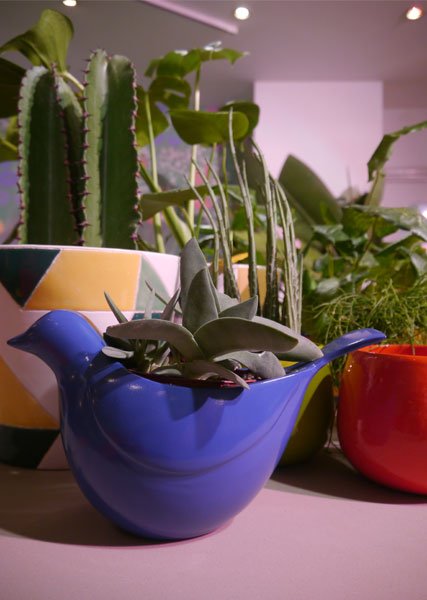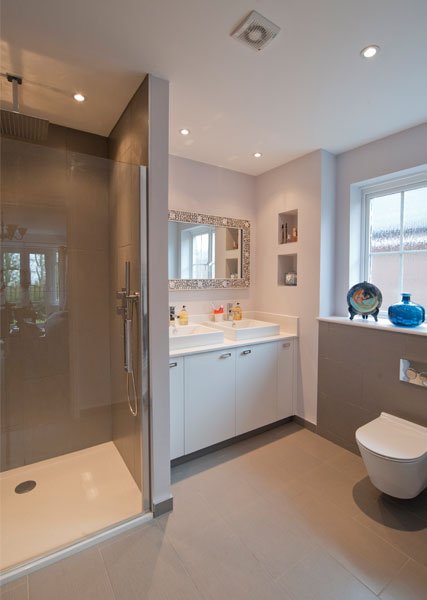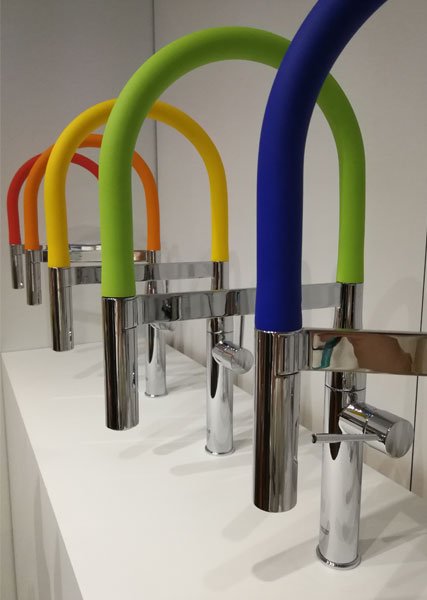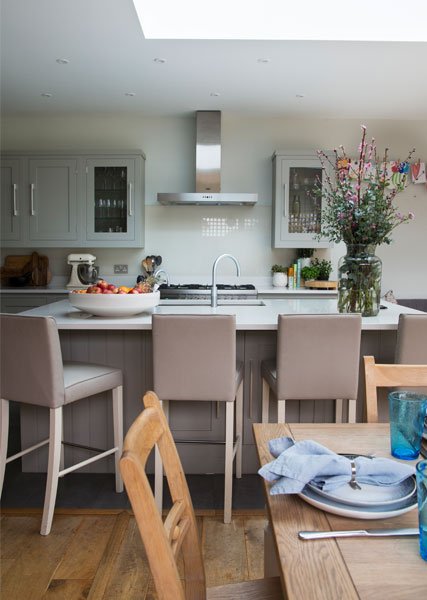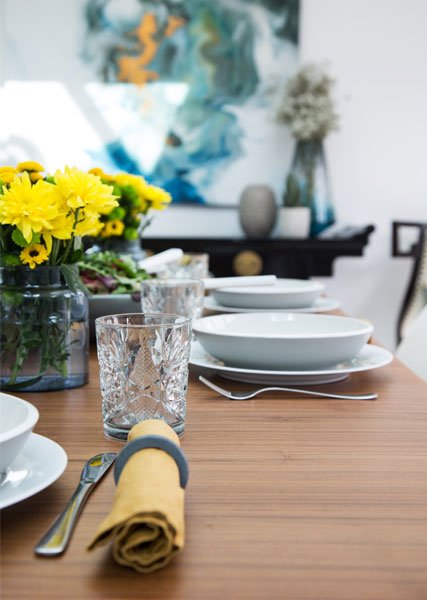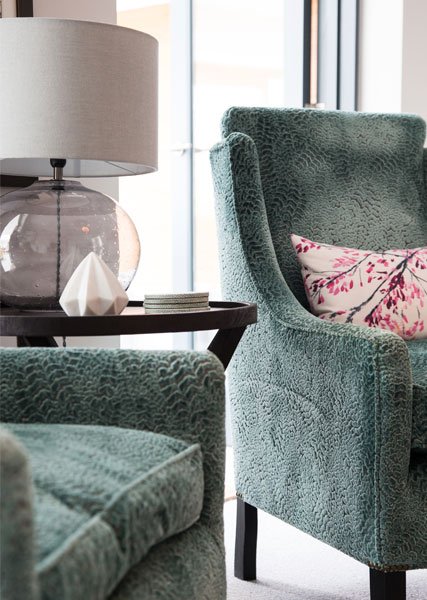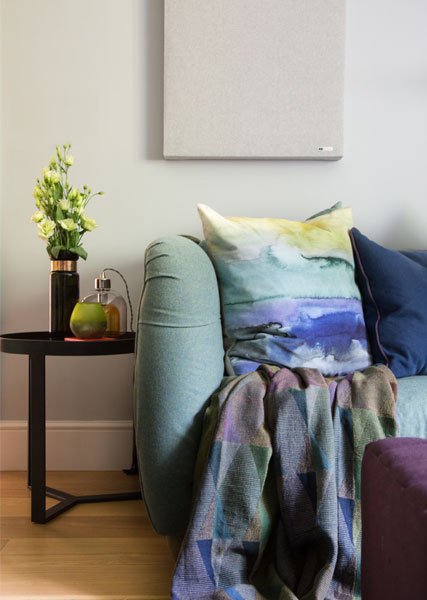Wellness in design – What’s that about?
Over the last few years there have been a few buzz words that have started to really infiltrate our culture. One of them is “wellness”, another “self-care”. We have all become alert to the hype around wellness and how we should be shaping our lives to take our mental and physical health into account. But how many of us are asking if our homes or workspaces are supporting our wellness instead of just supporting our Instagram likes?
As designers we are always considering how people feel and function in the spaces we design but wellness design asks us to dig a little deeper. The Well Building Institute in the US breaks down 7 areas to take into account when designing interiors. I think of these as the 7 elements our body needs to thrive.
Air
We all need to breathe but the quality of what we breathe is the question here. Air pollution ironically is starting to be 2-5% higher inside our homes than outside. This isn’t to be taken lightly as air pollution can lead to respiratory issues like asthma and even a higher rate of premature mortality. Yikes! The closer to the road your home is, then the worse your air quality. But it’s not just about what is coming through your windows but about what is happening in your home. The condition of your home plays a huge role as damp and mould is dire for your health. But before you reach for your trusty mould spray and paint brush, it’s worth noting that the third creator of home air pollution is chemicals in household cleaners, beauty products and paints. Though we can’t change the location of our home easily, we can address how we maintain it and what we use in it.
The first step is to get your home maintenance in order and get any damp and mould sorted out. Damp normally needs a specialist to look at it. Mould in bathrooms is a little easier to fix by sorting out good ventilation so condensation can’t linger for mould to breed in. The second step is to address what is bringing pollutants into your home. Pick paints with low VOCs and household products that are as free from chemicals as possible. The brand Method is great; it’s readily available at lots of supermarkets, is low in chemicals and it actually works. The third solution is to find things that can help you purify your air. Plants are amazing at turning our rubbish into breathable air. Also, opening a window to let the air flow through and freshen your home is so simple but it really works.
Water
There are three ways water can help us:
Keeping clean with it – It’s amazing how quickly life grinds to a holt without fresh running water coming into our homes. From our bodies to our clothes, fresh running water keeps us healthy.
Drink it – We all know about the minimum 2 litres of water a day we should be drinking to keep healthy but so few of us do it. The best way to make something a habit is to make it really easy to do. Kitchen taps that also produce filtered drinking water save you either having to buy bottled water or waiting for your filter jug to do its job. If you like it cold then get some glass bottles, fill them up and store them in the fridge. Keeping water to hand, on your desk or by your bed, makes it so much easier and makes sipping your way through the day a habit.
Relaxation – The sound of flowing water is naturally calming. Many homes that embrace Feng Shui incorporate water features into them so that you have the sound of babbling brook as a relaxing ambient sound.
Nourishment
Our relationship with food within our home is all about how we design our kitchens. From storing food, to cooking it, to eating it. This is the space that can either support a healthy lifestyle or encourage an unhealthy one. Lots of this I covered in my blog post about kitchen design which you can check out. One of the keys to building a healthy relationship with food is how you lay your kitchen design out; things you should be eating within eye sight and the stuff you shouldn’t either not in the house at all or a little bit harder to reach. If there is good flow to how you work in the kitchen it also makes preparing fresh food so much easier.
Light
For me this is one of the most important and gets into the fact our body is designed to follow the stages of the sun to inform it what it should be doing during the day and night. We also need that Vitamin D to keep us sane and healthy. Light and airy sells property a lot quick than dark and gloomy. Most family kitchens now have huge bi-fold doors leading onto the garden and we are inviting more and more natural light to flood our homes. The flip side of this is that we also need our bedroom to be a bit darker and cut light out so that our bodies can step through the stages of shutting down for a good night’s sleep. (read more here)
Fitness
The sedentary lifestyle is killing us and is apparently becoming a bigger issue than smoking. In office buildings they are starting to address this by making the stairs the primary way of getting to the next floor and hiding the lift far away. In the home we’re not really making a choice between lift or stairs. However, we need to keep our bodies moving. Exercise equipment and home design don’t often mix! So often the fact that a bike is buried deep under a pile of stuff in the garage doesn’t make you rush to get it out and jump on it. If you make something easy to use, you use it and your health will benefit.
Comfort
A desire to be comfortable is ingrained in us humans and I’m all about layering in the comfort on sofas and beds with cushions and throws. But it’s more than just being comfortable in the snuggly way. It’s also making sure we are looking after our body with the furniture we plonk it in. Is it supporting our posture correctly so that we don’t suffer from back, muscle or joint pain? It’s also about making sure the acoustics of a space are comfortable to live with. Tinny, hard noise hurts too. And then it’s about questioning if you are comfortable with the temperature. Some can’t cope if it‘s too hot and I can’t cope if I’m cold. These are all environmental factors that make us feel comfortable and we have to design with them in mind.
Mind
Our mental health has a huge impact on our lives, but it is the hardest to put our finger on what makes for happy spaces. The best way is to start by looking at what makes for really unhappy spaces and then stop designing that way. If your house is constantly hard work to keep on top of, it becomes stressful. Then it’s also about questioning what makes people happy. In our homes it is a sense of security and peace. That’s why people find it so hard to return to a house which has been burgled; their feeling of being safe has gone. And finally, a happy space is one which gives you a feeling of pleasure, is filled with the things that give you purpose and tells your story. It’s known as our sanctuary for a reason.
Each one of these elements can be huge to address and the more you can address them at the start of designing a building the better it will be. But that doesn’t mean you can’t adapt them as your home stands. After all, who doesn’t want to live in a space that helps their wellbeing?



